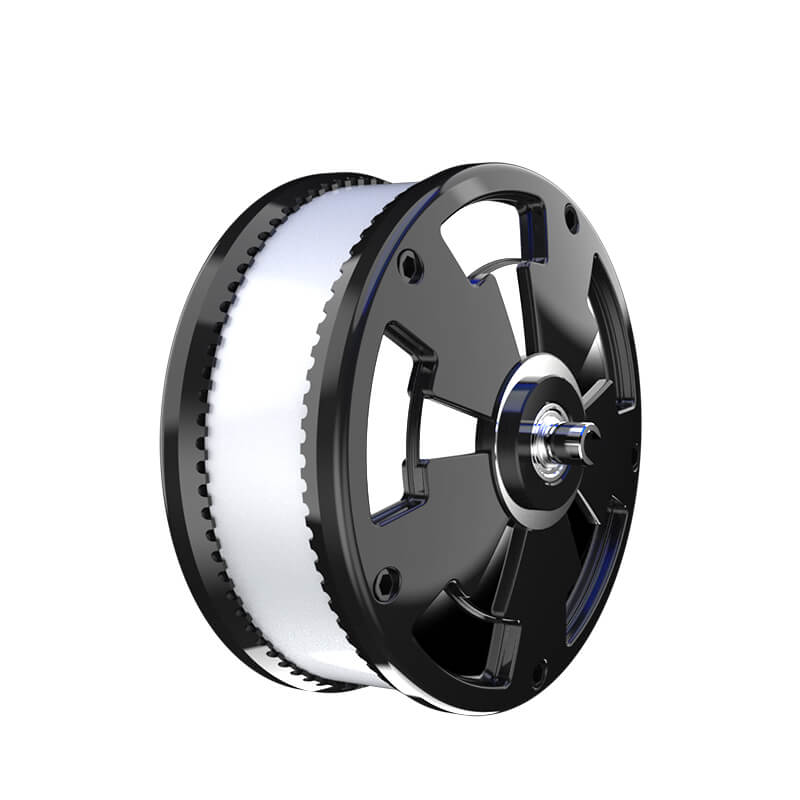Imagine a device so versatile, so precise, and so effortlessly controllable that it opens a world of creative engineering and robotics possibilities. That device is the 360° remote-controlled servomotor. Whether you're a hobbyist looking to add a smooth rotating mechanism to your latest project, an educator teaching the principles of robotics, or an engineer developing innovative automation solutions, this servomotor is redefining what’s achievable with remote control technology.

What is a 360° Remote-Controlled Servomotor?
At its core, a servomotor is a compact motor designed for precise position control. Unlike traditional motors that simply spin continuously when powered, a servomotor is built to reach and hold specific angles. The "360°" descriptor indicates that this particular servomotor can rotate a full circle—it’s capable of continuous rotation, unlike standard servo motors that often rotate within a limited range (generally 0°-180°). This feature makes it ideal for applications requiring complete rotational freedom.
The addition of remote control functionality turns this device into a dynamic tool for remote operation. Using wireless signals—be it via infrared, Bluetooth, Wi-Fi, or RF—the user can command the servomotor to rotate, pause, or reverse directions at will. This combination of full rotation and remote operability makes it well-suited for robotics, art installations, surveillance systems, and even interactive exhibits.
Features of the 360° Remote-Controlled Servomotor
What sets these servomotors apart from traditional ones? Here are some key features:
360° Continuous Rotation: Enables full-circle rotation, unlike standard servos limited to a fraction of a turn. This feature is crucial in applications like robotic wheels, rotating cameras, or rotating arms in automation devices.
Precise Remote Control: Advanced wireless modules provide accurate and reliable communication. Whether controlled via smartphone, remote controller, or embedded systems, the responsiveness is smooth and real-time.
High Torque and Speed: Despite size constraints, many models pack significant torque and swift rotation capabilities, essential for demanding tasks such as steering, actuation, or balancing.
Durability and Reliability: Designed to operate repeatedly under various conditions, these servomotors often feature high-quality materials and protective coatings to ensure longevity.
Ease of Integration: Compatible with popular microcontrollers like Arduino, Raspberry Pi, or other control boards, making it easy for hobbyists and professionals to incorporate into complex projects.
Why Choose a Remote-Controlled 360° Servomotor?
The appeal lies in its blend of versatility and convenience. Imagine controlling a robotic camera that can pan and tilt seamlessly with a simple remote, or developing an automated art installation where parts rotate fluidly in response to audience interaction. The possibilities extend across countless fields. Here are just a few reasons why you might opt for one:
Enhanced Creativity: Break free from limitations imposed by standard servo range. With continuous rotation, your designs can mimic real-world machinery more convincingly.
Remote Operation: No need for direct manual intervention. Control your device from a distance—useful for difficult-to-reach installations or interactive exhibits.
Educational Enrichment: Understanding the mechanics and control of such motors can serve as an excellent learning tool for STEM education, fostering hands-on experience.
Cost-Effective Innovation: These servomotors provide a high degree of functionality without the expense of larger or more complex systems.
Applications Explored
The true magic of the 360° remote-controlled servomotor lies in its application versatility. Some popular uses include:
Robotics: Use as drive wheels, continuous rotators in robotic arms, or for orienting sensors and cameras dynamically.
Automation Systems: Automate rotating shelves, camera gimbals, or art installations that respond to audience movements or environmental stimuli.
Drones and Vehicles: Integrate into flying drones or remote-controlled cars for steering or camera positioning.
Educational Tools: Demonstrate principles of motor control, wireless communication, and mechanical design in classrooms and workshops.
Home and Entertainment Gadgets: Create rotating displays, smart mirrors, or interactive decor that can be controlled remotely for added interactivity.
Established in 2005, Kpower has been dedicated to a professional compact motion unit manufacturer, headquartered in Dongguan, Guangdong Province, China.




































